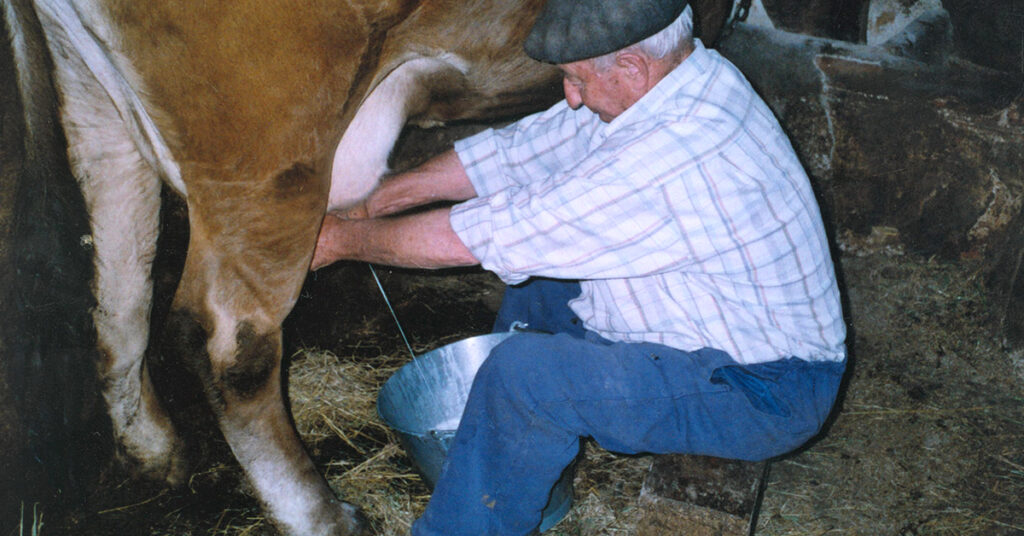Archives
Let us look at how cows were milked by hand, eskuz erastea, in the past. The barn needed to be a haven of peace and quiet to milk the cows. The bedding was mucked out and fodder was put in the manager so the cows stayed still.
Water was put in a bucket and the animal’s udders, erroak, were cleaned thoroughly. The milking stool, with three legs and a hole in the middle to move it easily, was then put in place.
The cows used to be milked directly into a zinc bucket, but given the risk of it turning over, they were then first milked into a pail or tank and the milk was then tipped into the bucket. In any event, when the cows were directly milked into the bucket – particularly when plastic buckets began to be widely used due to their lack of stability –, milkers had to hold the bucket tightly between their knees and feet.

Transportation of milk churns by cart. Neighbourhood of Ambasaguas in Carranza (Bizkaia), 1958. Courtesy of Miguel Sabino Díaz.
The economy of our society of generations past was very nearly self-sufficient, with hardly any money involved. Payments in kind and bartering among neighbours were common practice. Only a handful of items were purchased: salt, sugar, oil and tobacco. And depending on locations and circumstances not even those, as in the following instances. In surroundings close to salt mines across the territory locals were well supplied for salt. Some keen smokers cultivated tobacco; others contented themselves with the leaves of native plant species. Once dried and cut, the vegetable remains were rolled in the lighter inner husks of maize. Olives were grown in the south of the country, so cooking oil was readily available. Animal fats, namely tallow and lard, were often used instead of oil in areas not suited to olive growing. Little sugar was consumed, honey being its natural alternative. In time of shortage the traditional farmstead was virtually a complete autarky from the point of view of food sovereignty. (more…)



